LWHGs with dark mantle and/or head-streaking forming distinct 'hood'
(including discussion of atlantis characters and convergent appearance in other taxa)
LWHGs with dark mantle and/or head-streaking forming distinct 'hood'(including discussion of atlantis characters and convergent appearance in other taxa) |
The following notes discuss some adult or near-adult LWHGs observed in the roost at Coton Lakes, Warwickshire, during December 2011 and which displayed: (a) dark grey mantle of a shade darker than is normally associated with argentatus, even northern individuals, and/or (b) densely streaked head with the streaking forming a 'hood' which was well-demarcated from relatively clean white neck and breast. These features in combination are often associated with Yellow-legged Gulls of the Azorean form, atlantis.
It should be emphasised that no firm identities are ascribed to the first two individuals below and it is categorically not suggested that the first individual is atlantis. In particular, the precise pattern of the primaries was not determined and the lack of this critical information is a barrier to any attempts at diagnosis.
The images and notes are offered merely as a contribution to recent discussions of Azorean-like gulls in the UK and are intended only to illustrate the variation among gulls to be encountered in midlands roosts. The photos were taken in the inevitably failing light of an evening gull-roost and, consequently, are of less than ideal quality. However, images are included which also show Lesser Black-backed Gulls and Herring Gulls, which enables a reasonably accurate evaluation of hues.
Questions to be addressed include: To what extent can such atlantis-like features occur on other LWHGs? How closely can other taxa simulate the appearance of atlantis? How can atypical michahellis or so-called 'lusitanius' from Iberia be excluded conclusively? How can hybrids involving two of YLG, LBB or HG (or back-crosses) be ruled out conclusively? The variation of Herring Gull seems so extensive that some extreme examples of that form might perhaps simulate atlantis in general appearance?
The first individual illustrated below displayed a combination of dark mantle and hooded appearance.
The second individual illustrated (one of three similar individuals seen during the second week of December) had a comparably dark mantle but was much less heavily streaked on the head (with no hooded appearance) but also showed a heavily streaked 'collar'.
Thirdly, a distant (and unfortunately poor) image shows a Herring Gull with a well-demarcated 'hood' of streaks.
For examples and discussion of gulls considered by their observers to be good candidates for atlantis, see gulls with 'Azorean' type features at Chasewater during November and December 2011.
December 5th 2011. Dark mantle and well-defined 'hood' of streaks
On December 5th, a LWHG was present which displayed a grey hue to mantle comparable with michahellis (one of which directly compared) and copiously streaked foreparts of head (forehead and ear-coverts area), this zone rather sharply demarcated from relatively lightly streaked remainder of head. Photos below show general appearance and shade of grey compared with Lesser Black-backed Gulls and Herring Gulls. Precise details of primary patterns were not determined nor leg colour.

Plate 1. With Lesser Black-backed Gulls and 'two shades' of Herring Gull
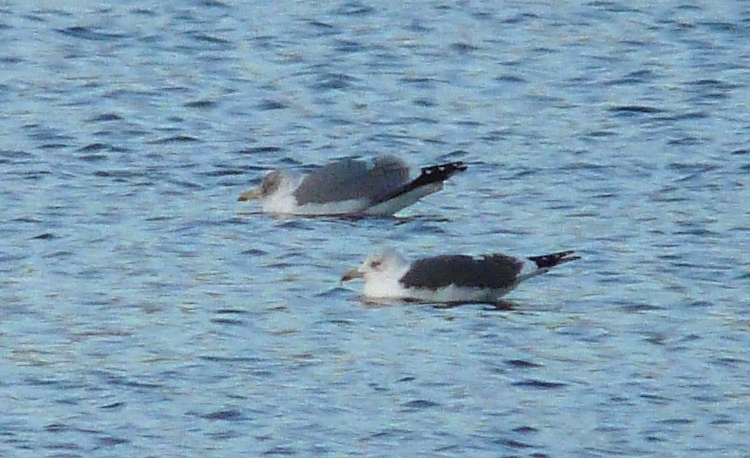
Plate 2. With Lesser Black-backed Gull
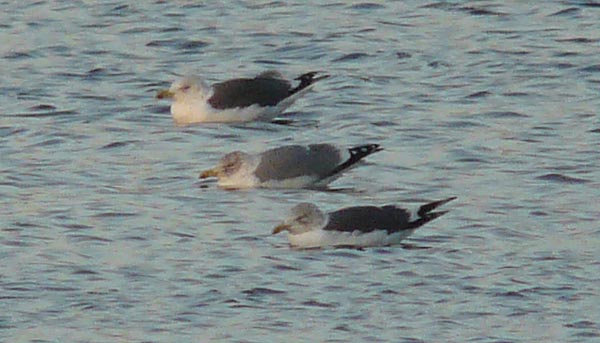
Plate 3. With Lesser Black-backed Gulls
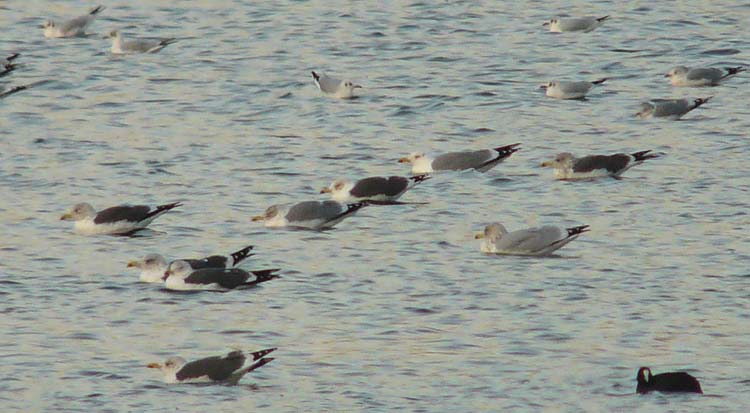
Plate 4. With Lesser Black-backed Gulls, Yellow-legged Gull and Herring Gull. Note similar shade of grey on mantle to the michahellis. Note also, however, very different structure compared with michahellis (more hump-backed, thickset and less elegant, lacking the frequently evident long, straight and slightly rising dorsal profile of michahellis) .
December 9th 2011. Dark mantle but only limited streaking to head and a heavily streaked hind 'collar'
At Coton Lakes during the second week of December there were up to three LWHGs with a mantle comparable to michahellis with only limited head streaking (though beyond what might be expected in michahellis and with head-and-bill shape, and size of white apical spots, more in keeping with argentatus). Below is an example. When this individual lifted off the water, its legs appeared pink.
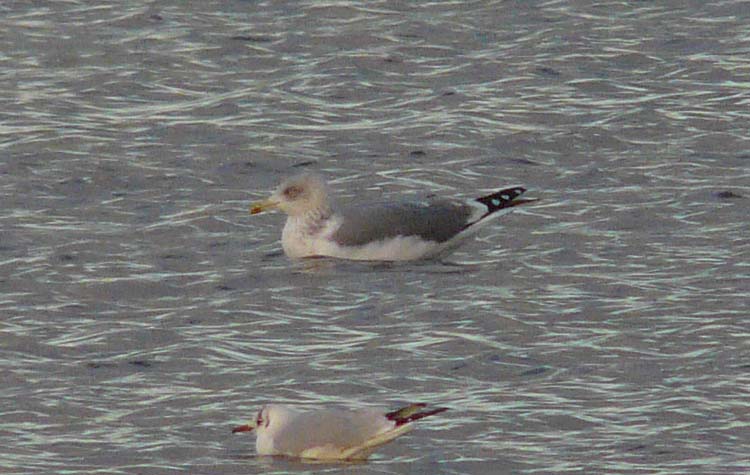
Plate 5.
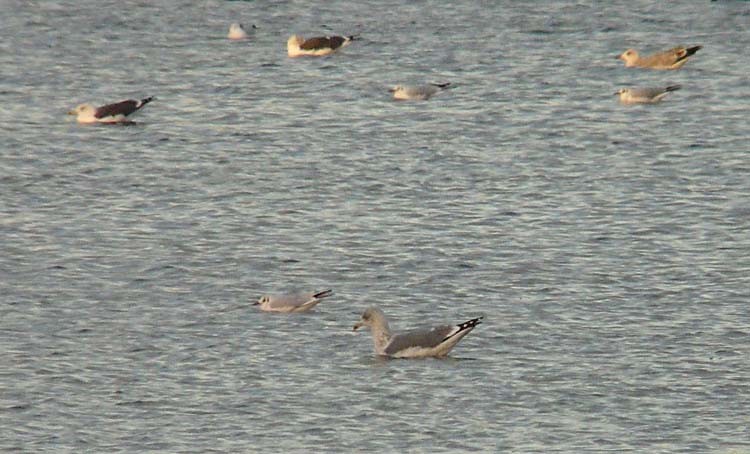
Plate 6. Compare mantle hue with that of Lesser Black-backed Gulls
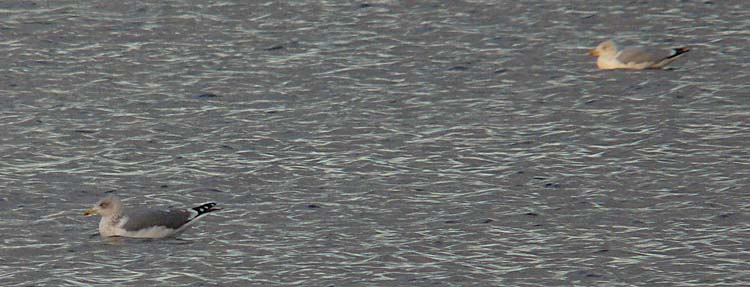
Plate 7. Compare mantle hue with that of (typical) Herring Gull
Also during the week there were two Herring Gulls (with typical mantle shade) with dense head-streaking, creating a sharply demarcated 'hood'. Below is an example.
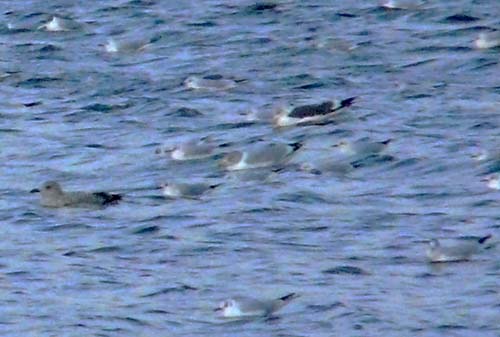
Plate 8.
See also individual at Dosthill on November 1st 2010 for a bird with a 'hooded' appearance and just a single mirror. That individual was not as dark as atlantis candidates and useful discussions with Peter Adriaens and Dick Newell (q.v.) concluded that a hybrid was the most likely origin.
Azorean Yellow-legged Gulls are decidedly dark-mantled: in ‘Gulls of Europe, Asia and North America’ (2003), Olsen & Larsson give Kodak Grey Scale 7 – 9 for atlantis c.f. 5 – 7 for Mediterranean michahellis and 8 - 10 (11) for graellsii Lesser Black-back. Thus atlantis averages darker than michahellis and the darkest atlantis are comparable in hue with a typical graellsii. Also, atlantis have especially densely-streaked head in winter but often with cleaner lower neck and breast, so that the head-streaking often creates a quite well-demarcated dark hood or cowl. There is usually just a single mirror, on p10, with < 2% having a second mirror on p9 (Olsen & Larsson). There is frequently a small dark mark on p4. In winter, the yellow hue of bill and legs tends to be rather dull. For on-line images see the Azorean entries on Martin Reid's website and the photos of atlantis on Daniele Occhiato's website, with this at rest image and this in-flight image of adults being especially relevant.
A LWHG showing this combination of features will naturally lead to speculation about Azorean atlantis and no doubt this taxon does occasionally reach the UK. However, confidently assigning a gull to this form requires that other options are eliminated with certainty. Perhaps the greatest problem is to eliminate a hybrid between two of Yellow-legged Gull, Lesser Black-backed Gull and Herring Gull. In this context, for subscribers to Birdguides, it is well worth consulting a useful discussion by Martin Garner of an individual with atlantis-like features observed at Kensington in 2006.
Additionally, in discussions of 'extra-limital' gulls which have shown features suggestive of atlantis, it is often noted that another form to be considered is 'lusitanius' from the coast of Iberia. Useful data on 'lusitanius' can be found in Olsen & Larsson (2003) and also in items on the website of the Gull Research Organisation. There is a valuable photo gallery on the GRO site while texts available there include ‘Sex Differentiation of Yellow-legged Gull (Larus michahellis lusitanius): the Use of Biometrics, Bill Morphometrics and Wing Tip Coloration’ by Arizaga et al. and ‘Sexual Size Dimorphism and Determination of Sex in Atlantic Yellow-legged Gulls Larus michahellis lusitanius from Northern Spain’ by Galarza et al. The former text notes for ‘lusitanius’ that 66% have a second mirror, on p9 (37.9% spanning both vanes, 28.1% spanning one vane). This compares with < 2% for Azorean atlantis according to Olsen & Larsson. Thus, the typical atlantis has a single primary mirror (and also a dark mark on p4) while the typical 'lusitanius' has two mirrors - but over 30% of 'lusitanius' have only a single mirror so such individuals are not that exceptional.
Further, there is good evidence that 'lusitanius' can have a head-pattern in winter which emulates that of atlantis, with a well-demarcated 'hood' of dense, dark greyish streaks. See the images and comments from Daniel Lopez Velasco relating to such individuals encountered in Cantabria and NW Spain. The comments note inter alia that individuals with the heaviest head-streaking also tend to have a black subterminal mark on the bill (as well as a red spot), leading to suggestions that they may be near-adults rather than full adults.
The second GRO item noted above includes the following useful comments on 'lusitanius':
‘Several studies have shown further differences between yellow-legged gulls from
Atlantic Morocco and Atlantic Iberia and also that some of the ethologic and
phenotypic characteristics of the Atlantic Iberian populations are more similar
to herring gull Larus argentatus populations than to the yellow-legged
populations breeding in the Mediterranean basin (Teyssèdre, 1983, 1984; Mínguez,
1988; Munilla, 1997a, 1997b; Beaubrun, 1988). Furthermore, Pons et al.
(2004) provided additional evidence to support that Atlantic Iberian
yellow-legged gulls are closer to herring gull than to Mediterranean
yellow-legged gulls in size and shape.’
Olsen & Larsson echo that 'lusitanius' can be more Herring Gull-like than
michahellis. However, their text states that 'lusitanius' is:
‘[Heavy-billed] with flat forehead, ‘snaky’ neck and slender hindparts, lacking
tertial step’. This suggests that the more Herring Gull-like appearance is
compared with a robust, square-headed and relatively bull-necked male
michahellis. Many female michahellis are much more slender and
delicate. The characters described by Olsen & Larsson do not correspond with the
dark-mantled LWHG depicted in plates 1 to 4 above which, while not large
overall, is rather hump-backed and has a tertial step; it is the nearby
Yellow-legged Gull in Plate 4 which has the slender hindparts and lacks a
tertial step. Thus, the stocky, rather inelegant appearance of the
dark-mantled, streaky-headed LWHGs under discussion does not seem to accord with
the structure of 'lusitanius' as described by Olsen & Larsson.
Clearly, further data are required on the range of appearance of atlantis, 'lusitanius' and hybrids involving michahellis, graellsii and argentatus. Currently, distinctions which might separate them appear qualitative and subjective rather than absolute.
|
|
|
|
Home |
Mediterranean
| Laughing |
Franklin's |
Little |
Sabine's |
Bonaparte's |
Black-headed |
Ring-billed | Common |
Lesser Black-backed | |